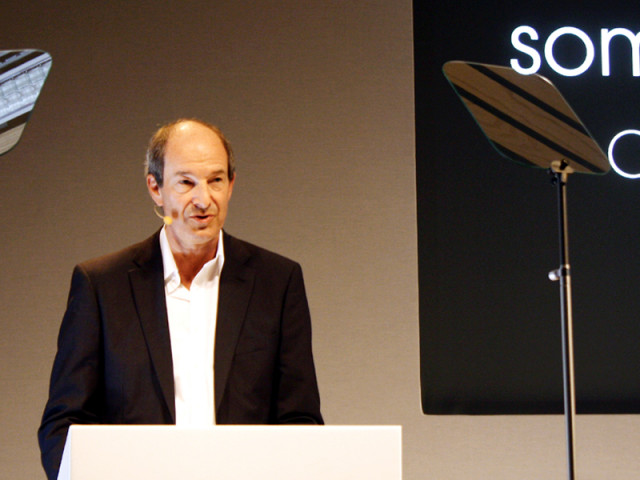
From fashionistas and educationists to psychologists and journalists — all in attendance from all over the globe, to discuss the advantages of a multisensory approach towards fabric care and fashion design. Held in Berlin, germany.
The two-day event was organised by P&G Future Fabrics, in association with Premiere Vision, a well-known fabric trend forecaster. It kick-started with a welcome note by Robert van Pappelendam, Vice President of P&G Fabric Care Europe.
Pappelendam stressed at the need to connect all the fabric related industries, stating that even the detergent market is part of the fashion industry.

“Last year, we announced that our mission is to redefine and elevate what cleaning and caring for clothes means and this year, in collaboration with our incredible partners, we’re taking that mission to another level — to explore how human psychology and cognitive behavioural analysis is helping to fuel product innovation,” Peppelendam said.
He further added that from scientific research to clothes design, we are increasingly aware of the benefits we can gain from a better understanding of human cognitive behaviour. The notion of being able to innovate and enhance products at such a human level is fascinating.

A multi-sensory approach towards fashion would indeed adjoin a lot of depth and seriousness to the otherwise flashy field of fashion design. This is because the designers, textile mill owners and the detergent industry would discover consumer behaviour to its fullest potential, giving a more refined experience to its customers by exploring fashion beyond the ideas of colour and cuts.
A keynote speech, given by John Turner, P&G’s Research & Development director, focused on why people’s preferences and perceptions towards their garments change over time. He introduced a three-step Fibre Science approach, to clean, protect and enhance — which focuses on prolonging and improving the properties of a multi-sensorial fabric that influences people’s perception of their clothes: the look, the feel and the scent. He shared that the life-cycle of our clothes is often cut short because these aspects are not taken into consideration.
“Our closets are full of clothes, yet we only wear 20 per cent of them 80 per cent of the time, so why aren’t we wearing the rest? Why have we fallen out of love with a garment that we spent our hard earned money on?” asked Dr Turner.
Turner and his team are applying the findings of such latest researches in the cognitive science of human perception to understand why a person rejects a garment and how our relationship with clothes changes over time.
“By applying this knowledge to our Fibre Science expertise, we are redefining what fabric care means for consumers and their clothes,” he added. Dr Lawrence Rosenblum, a professional psychologist, who has spent 30 years in the field of Cognitive Psychology, went into more detail about how our senses are always influencing one another, and impacting our preferences and moods more than we realise and often in ways which we are not aware.
Associate Fashion Director at Premiere Vision Sabin Le Chatelier shared a presentation on fashion as a multi-sensorial experience, which illustrated how fabrics are more than just visual articles of fashion, but alchemy of look, feel and touch — principally, they’re a whole sensory indulgence. She also revealed the current industry trends where imagination and technology are being combined to produce exciting sensorial fashions.
The event ended with a showcase of the British designer Giles Deacons’ latest machine-washable collections. Deacon is also P&G’s Global fashion Consultant.
Published in The Express Tribune, November 23rd, 2014.
Like Life & Style on Facebook, follow @ETLifeandStyle on Twitter for the latest in fashion, gossip and entertainment.


















COMMENTS
Comments are moderated and generally will be posted if they are on-topic and not abusive.
For more information, please see our Comments FAQ